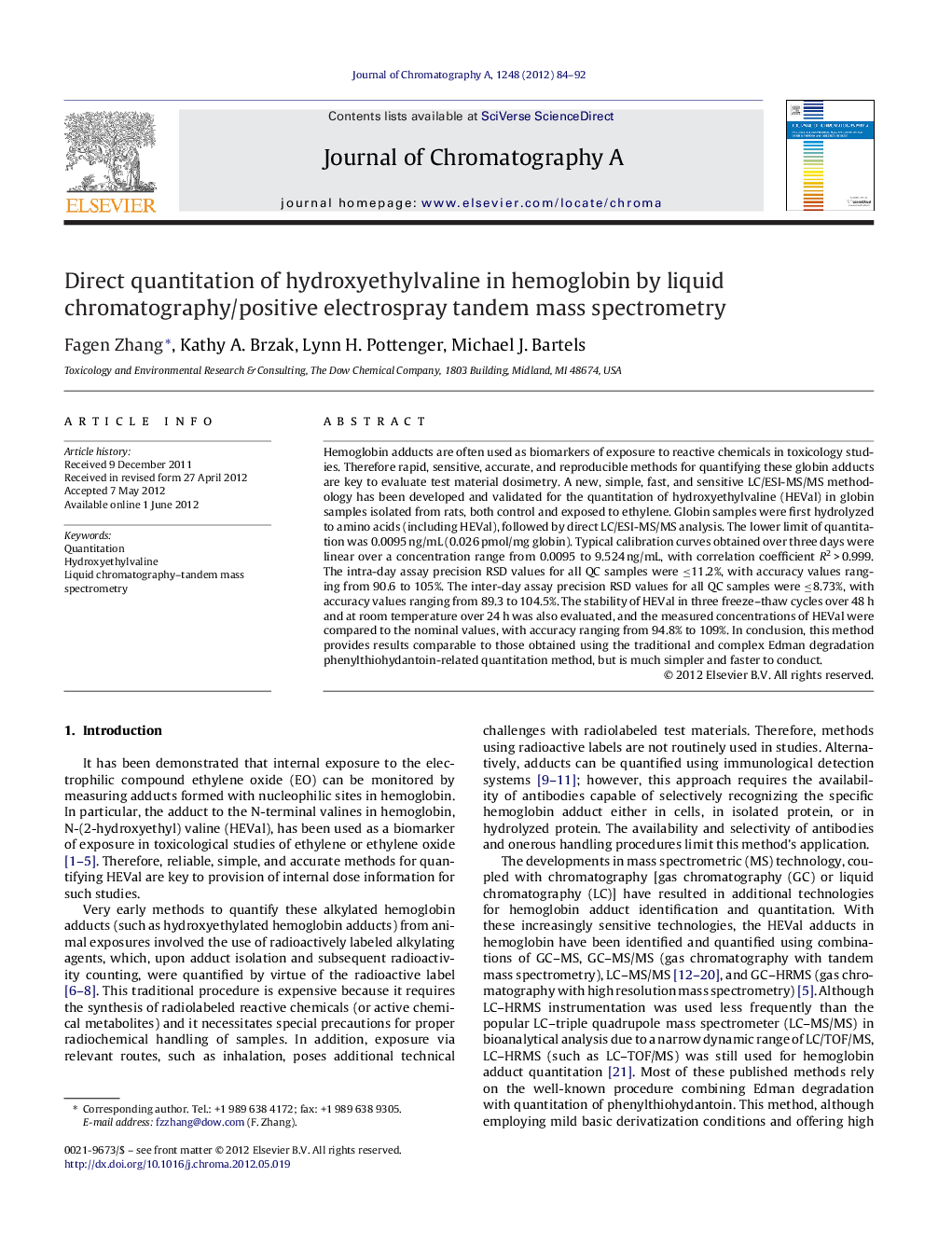| Article ID | Journal | Published Year | Pages | File Type |
|---|---|---|---|---|
| 1206012 | Journal of Chromatography A | 2012 | 9 Pages |
Hemoglobin adducts are often used as biomarkers of exposure to reactive chemicals in toxicology studies. Therefore rapid, sensitive, accurate, and reproducible methods for quantifying these globin adducts are key to evaluate test material dosimetry. A new, simple, fast, and sensitive LC/ESI-MS/MS methodology has been developed and validated for the quantitation of hydroxyethylvaline (HEVal) in globin samples isolated from rats, both control and exposed to ethylene. Globin samples were first hydrolyzed to amino acids (including HEVal), followed by direct LC/ESI-MS/MS analysis. The lower limit of quantitation was 0.0095 ng/mL (0.026 pmol/mg globin). Typical calibration curves obtained over three days were linear over a concentration range from 0.0095 to 9.524 ng/mL, with correlation coefficient R2 > 0.999. The intra-day assay precision RSD values for all QC samples were ≤11.2%, with accuracy values ranging from 90.6 to 105%. The inter-day assay precision RSD values for all QC samples were ≤8.73%, with accuracy values ranging from 89.3 to 104.5%. The stability of HEVal in three freeze–thaw cycles over 48 h and at room temperature over 24 h was also evaluated, and the measured concentrations of HEVal were compared to the nominal values, with accuracy ranging from 94.8% to 109%. In conclusion, this method provides results comparable to those obtained using the traditional and complex Edman degradation phenylthiohydantoin-related quantitation method, but is much simpler and faster to conduct.
► We developed a rapid LC/MS–MS quantitation method for hydroxyvaline in globin. ► This method gave similar hydroxyvaline values compared to the traditional method. ► This method provided a novel way for quantifying the hydroxyvaline biomarker.
